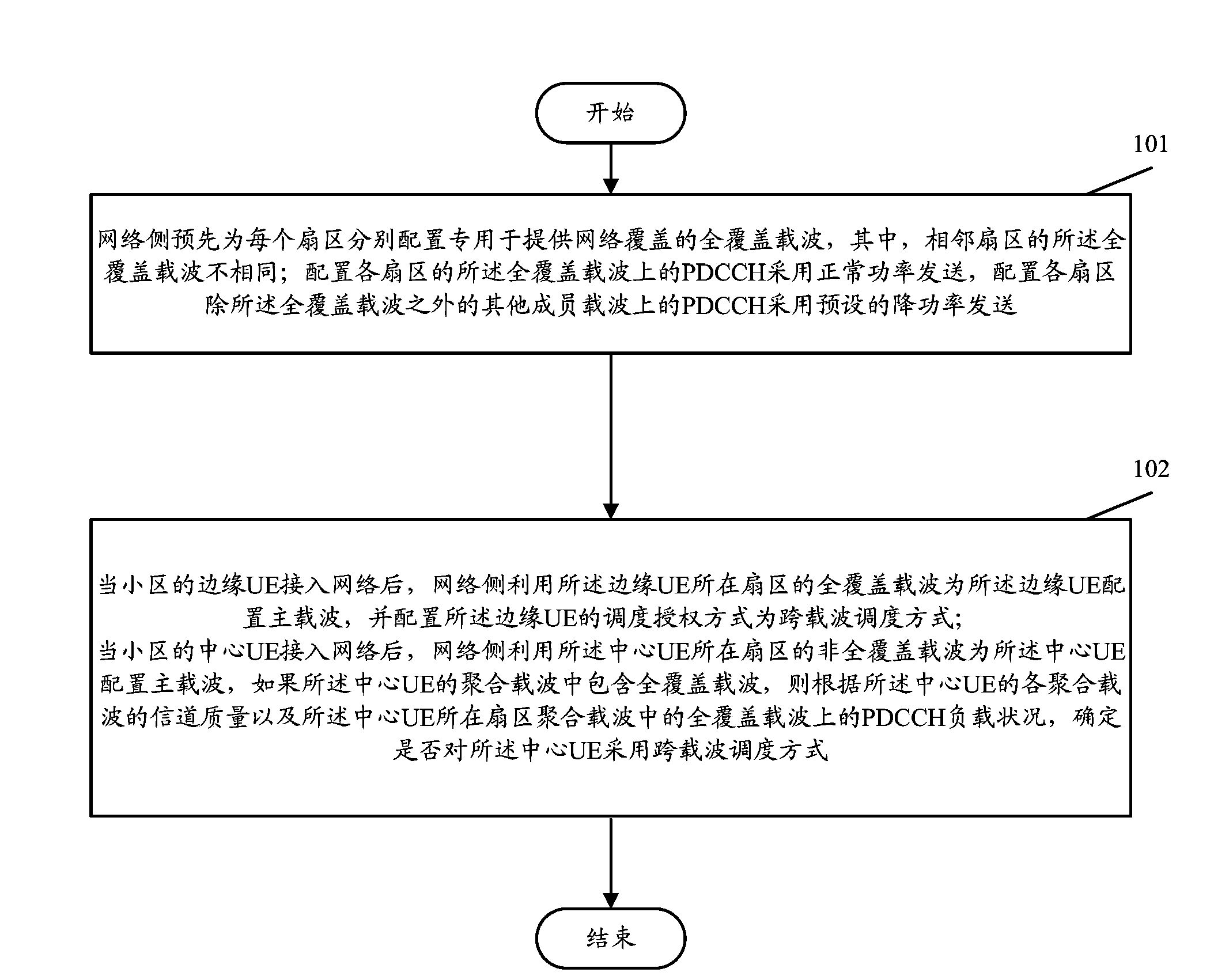Method for reducing downlink control channel disturbance
A control channel and power reduction technology, which is applied in the field of reducing downlink control channel interference, can solve the problems of heavy PDCCH load, heavy PDCCH load received on service channels, and is not suitable for homogeneous macro base station networking scenarios, so as to avoid PDCCH overload. Reducing the effect of PDCCH channel interference
- Summary
- Abstract
- Description
- Claims
- Application Information
AI Technical Summary
Problems solved by technology
Method used
Image
Examples
Embodiment Construction
[0016] In order to make the purpose, technical solution and advantages of the present invention clearer, the present invention will be further described in detail below in conjunction with the accompanying drawings and specific embodiments.
[0017] The core idea of the present invention is: for each sector, set a full-coverage carrier dedicated to providing network coverage, and make the full-coverage carriers of adjacent sectors different; The PDCCH channel of the non-full coverage carrier is transmitted with reduced power; the full coverage carrier of each sector is mainly responsible for providing PDCCH resources for the scheduling of UEs at the sector edge, so as to reduce the inter-PDCCH interference at the sector edge and improve the received SNR of the PDCCH channel At the same time, because the power of the PDCCH on the non-full coverage carrier is only reduced, that is, the power of the traffic channel of the non-full coverage carrier is not reduced, it can ensure t...
PUM
 Login to View More
Login to View More Abstract
Description
Claims
Application Information
 Login to View More
Login to View More - R&D
- Intellectual Property
- Life Sciences
- Materials
- Tech Scout
- Unparalleled Data Quality
- Higher Quality Content
- 60% Fewer Hallucinations
Browse by: Latest US Patents, China's latest patents, Technical Efficacy Thesaurus, Application Domain, Technology Topic, Popular Technical Reports.
© 2025 PatSnap. All rights reserved.Legal|Privacy policy|Modern Slavery Act Transparency Statement|Sitemap|About US| Contact US: help@patsnap.com

